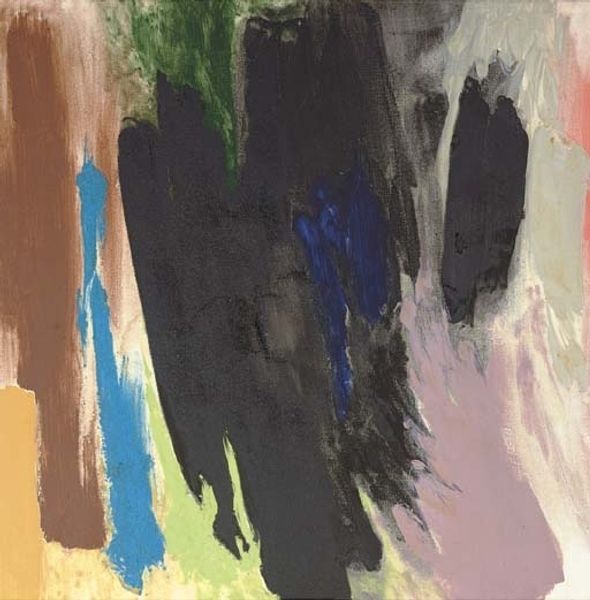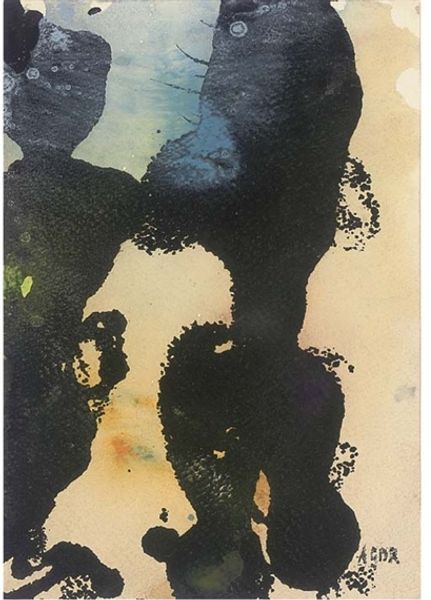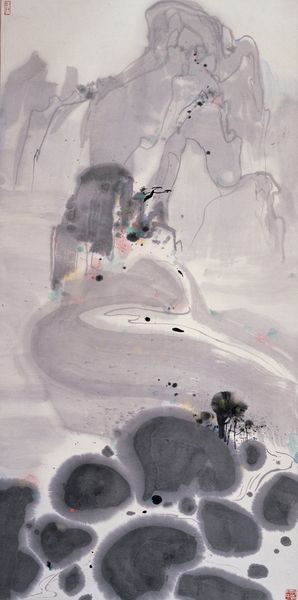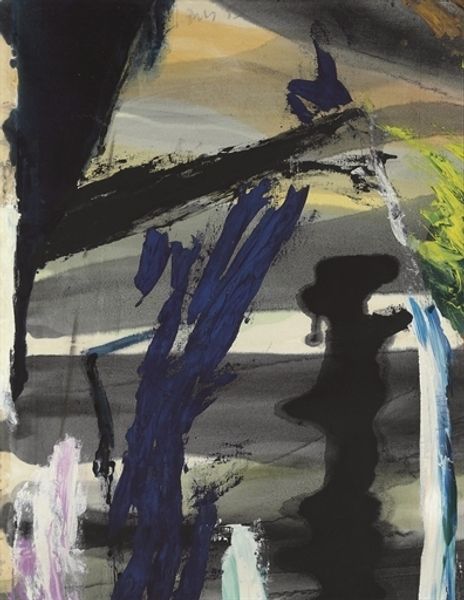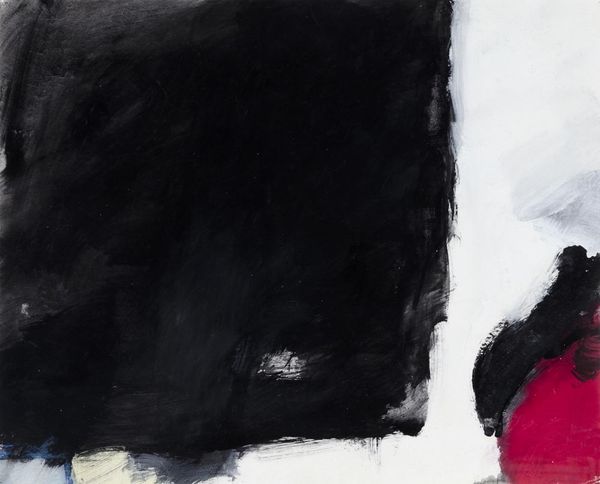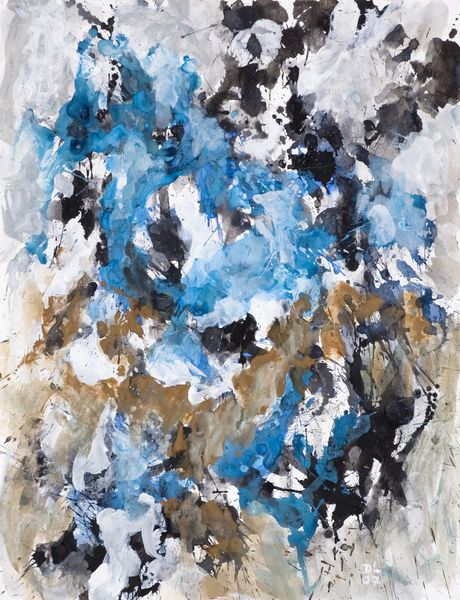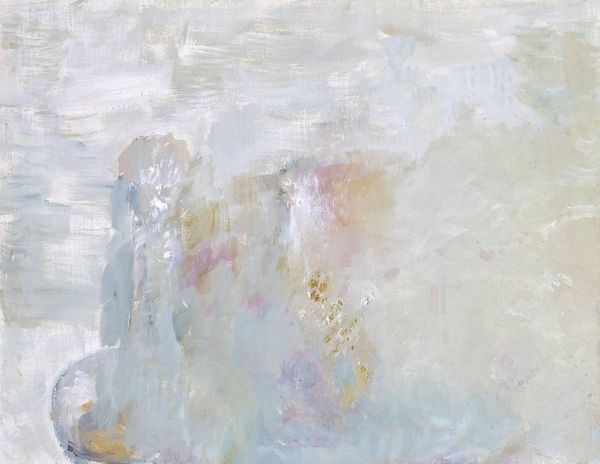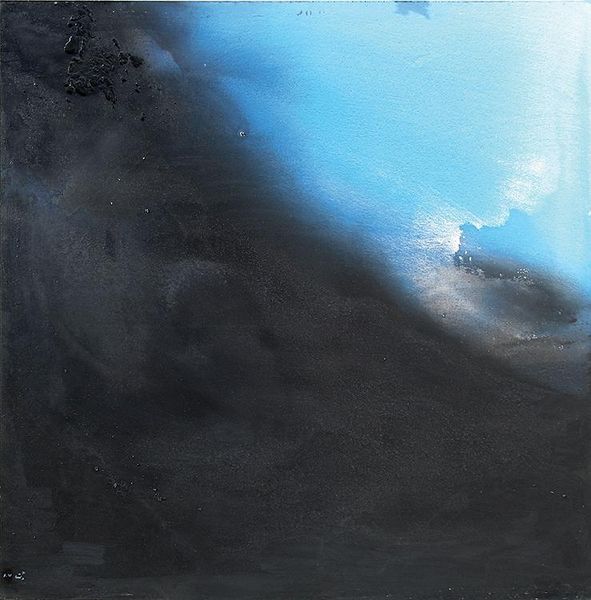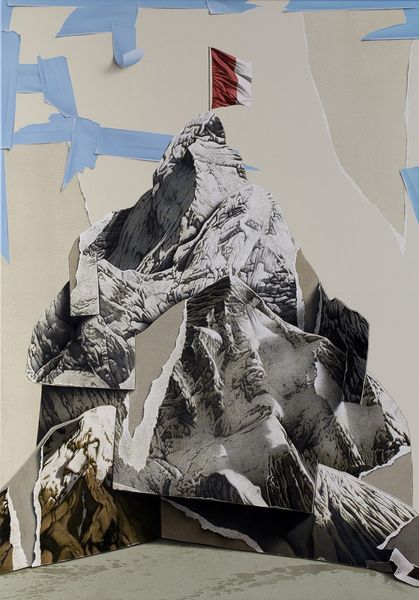
painting, watercolor
#
painting
#
landscape
#
watercolor
#
symbolism
Copyright: Public Domain: Artvee
Curator: This watercolor, “Landscape with Black Spruces,” painted by Magnus Enckell around 1894 or 1895, offers an intriguing example of Finnish Symbolism. Editor: My immediate reaction is somber. Those silhouetted trees against the diluted blues and grays of the sky feel oppressive, almost like a visual representation of melancholy. Curator: It's interesting you say that. Consider that Enckell was working during a period of intense cultural and political upheaval in Finland, and that the making of landscapes allowed the artist to claim territory for Finnish art. The medium, watercolor, allowed a rapid method for observing light that we also see used among impressionist painters. Editor: Absolutely, the sociopolitical context is key here. Late 19th-century Finland grappled with issues of identity under Russian rule; those black spruces may represent a yearning for stability, a grounding in the Finnish landscape amidst broader cultural anxieties. Curator: That connection of political issues and the act of image production is fascinating! Note that we’re talking about the symbolism movement here, so materiality becomes symbolic as well: watercolor lends itself to a sense of immediacy, even transience, as it reflects this emotional ambivalence you are speaking of. It reminds the viewer that these representations of forests come at the cost of physically transforming plants. Editor: And speaking of materials, the stark contrast in value between the spruces and the delicate washes in the sky also intrigues me. It forces a dialectic between hope and despair, between what’s solid, almost violently present, and what is atmospheric. Gender is at play, too. Landscape painting was seen as appropriate for women because it occurred outside. What happens when a male artist explores this "feminine" subject in a country moving toward suffrage and equality? Curator: Such an intersectional understanding gives insight into Enckell’s work and career as a Finnish artist in a pivotal time. To think about his process of engaging a so-called "feminine" style is compelling as well, because his landscape provides us with some access to his interior life. Editor: Indeed, seeing art as a product of, and contributor to, the complex negotiations of identity and cultural discourse allows a richer, deeper interpretation. Thanks for helping me see the landscape in Enckell's "Landscape with Black Spruces" beyond my own emotional response. Curator: And thank you for reminding us that what might appear to be a passive observation of landscape contains a potent commentary on its own artistic moment.
Comments
No comments
Be the first to comment and join the conversation on the ultimate creative platform.
